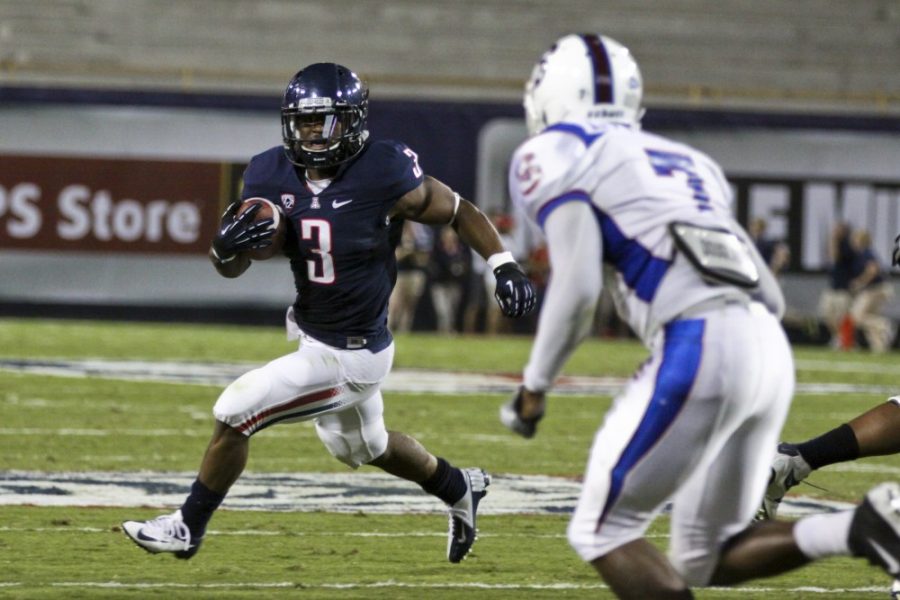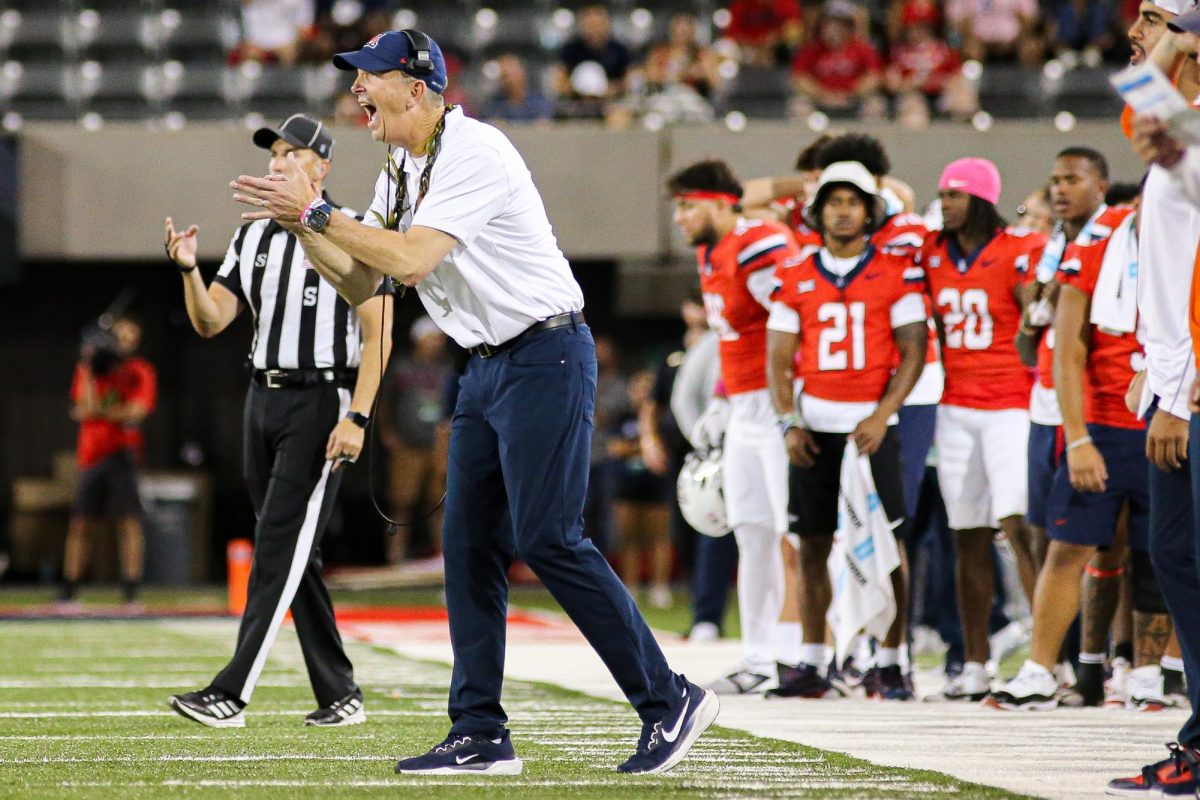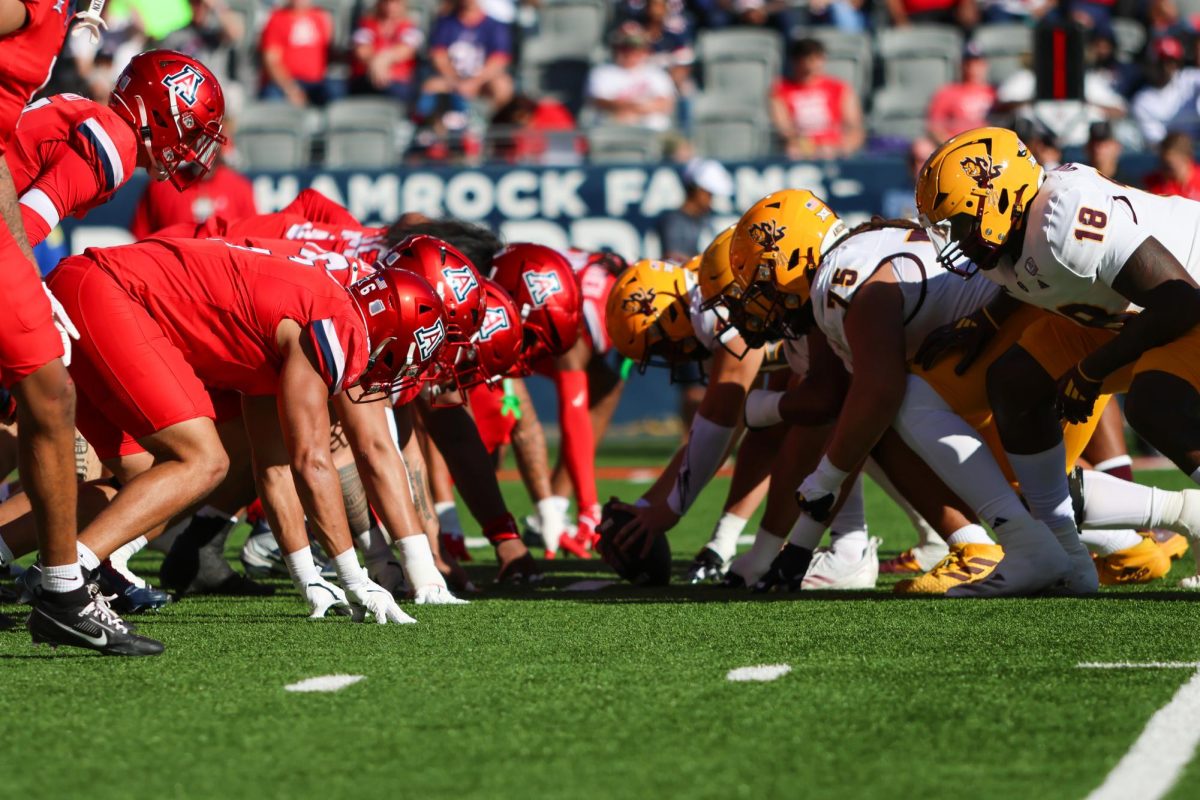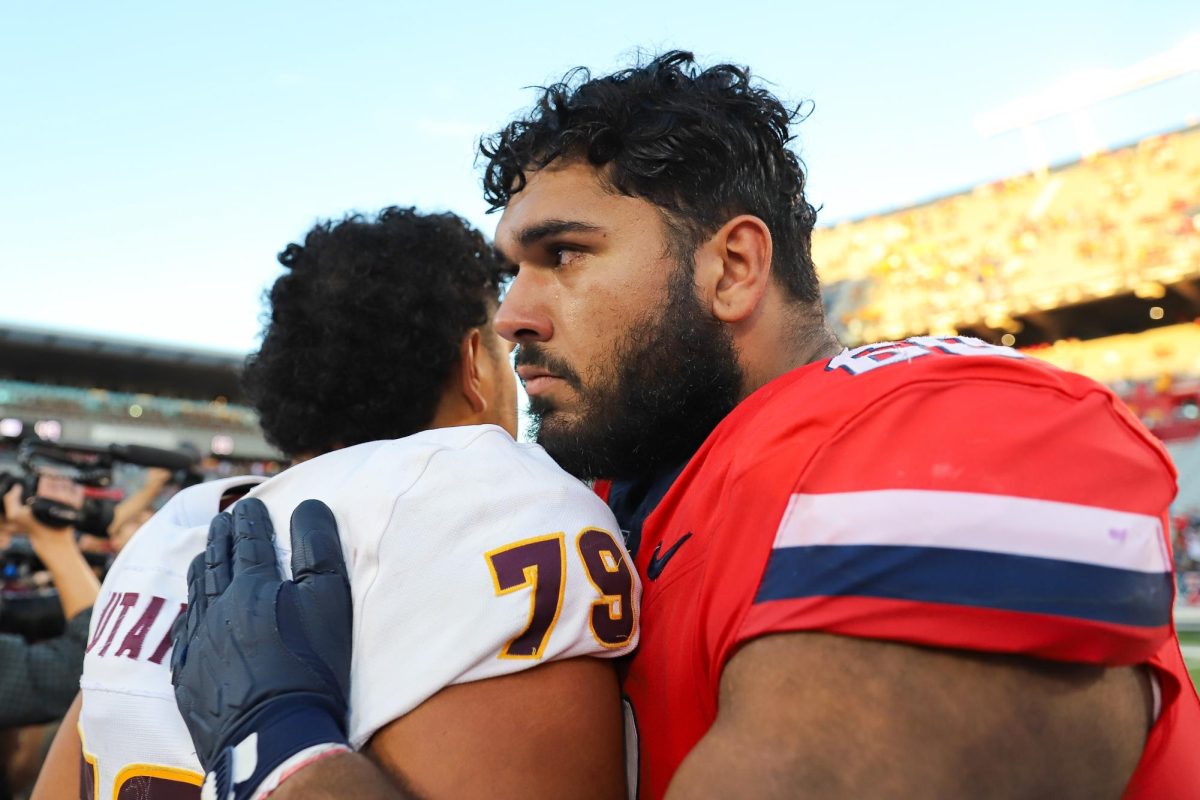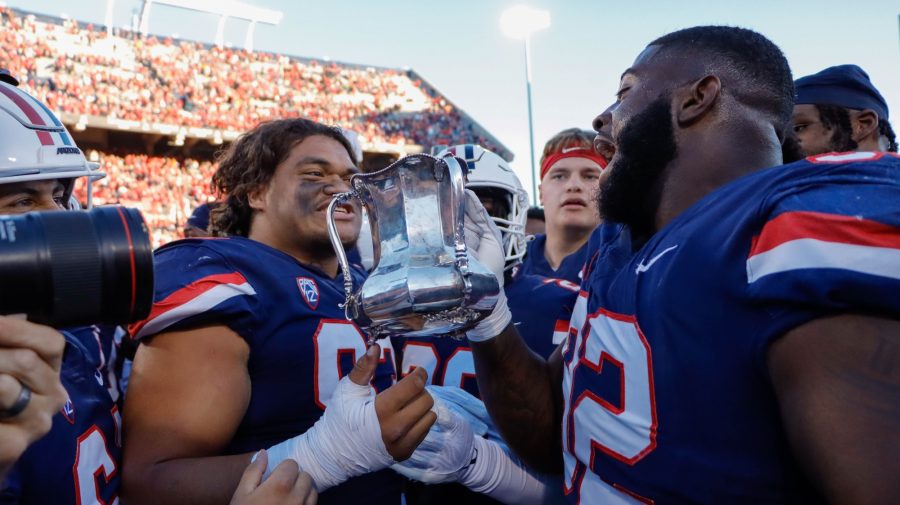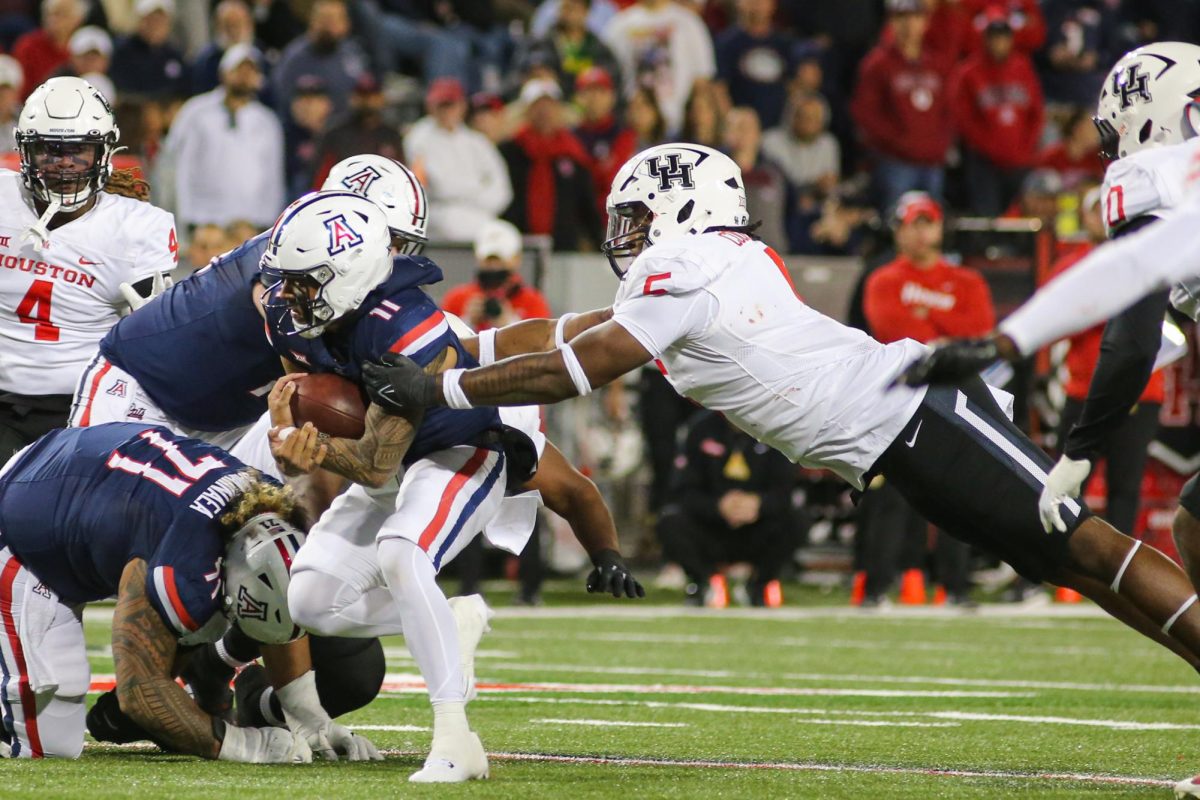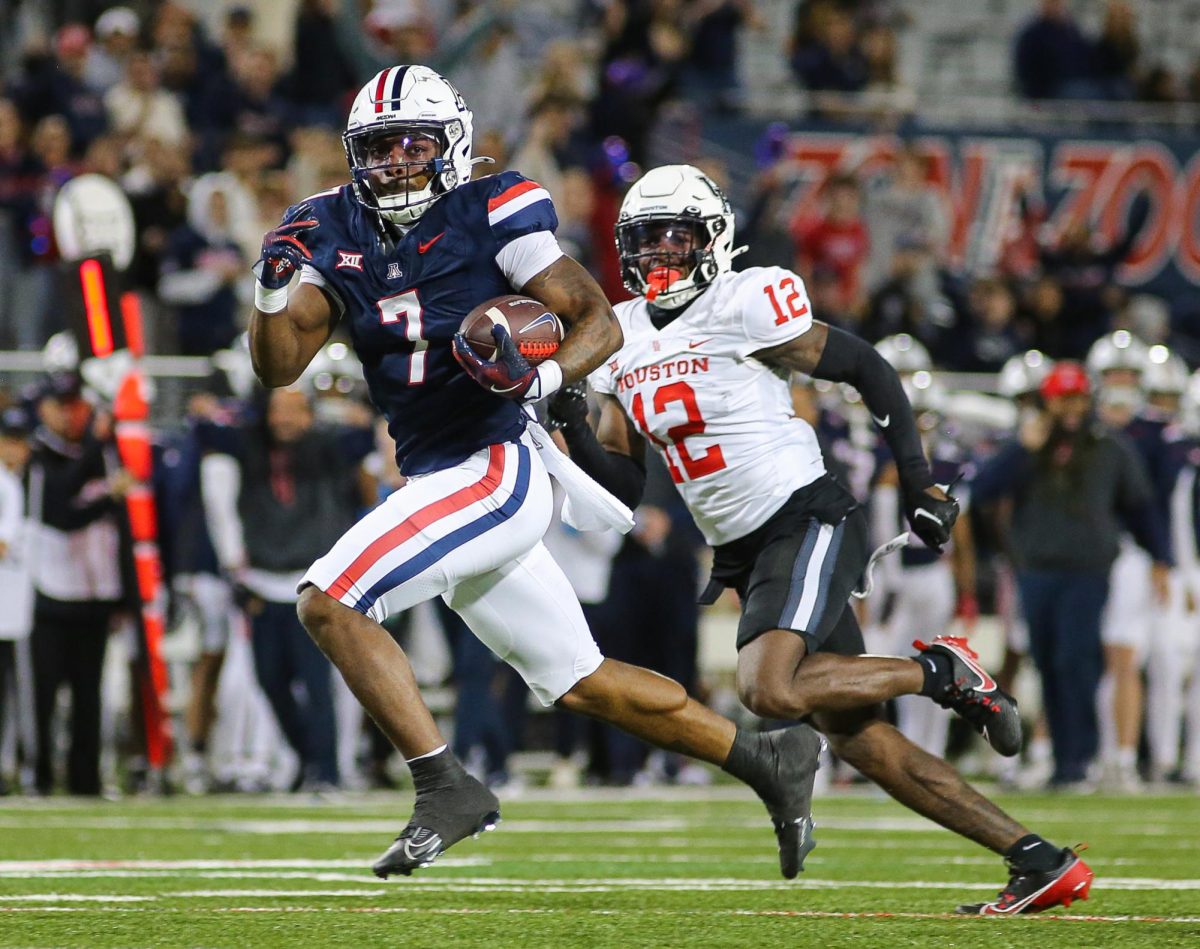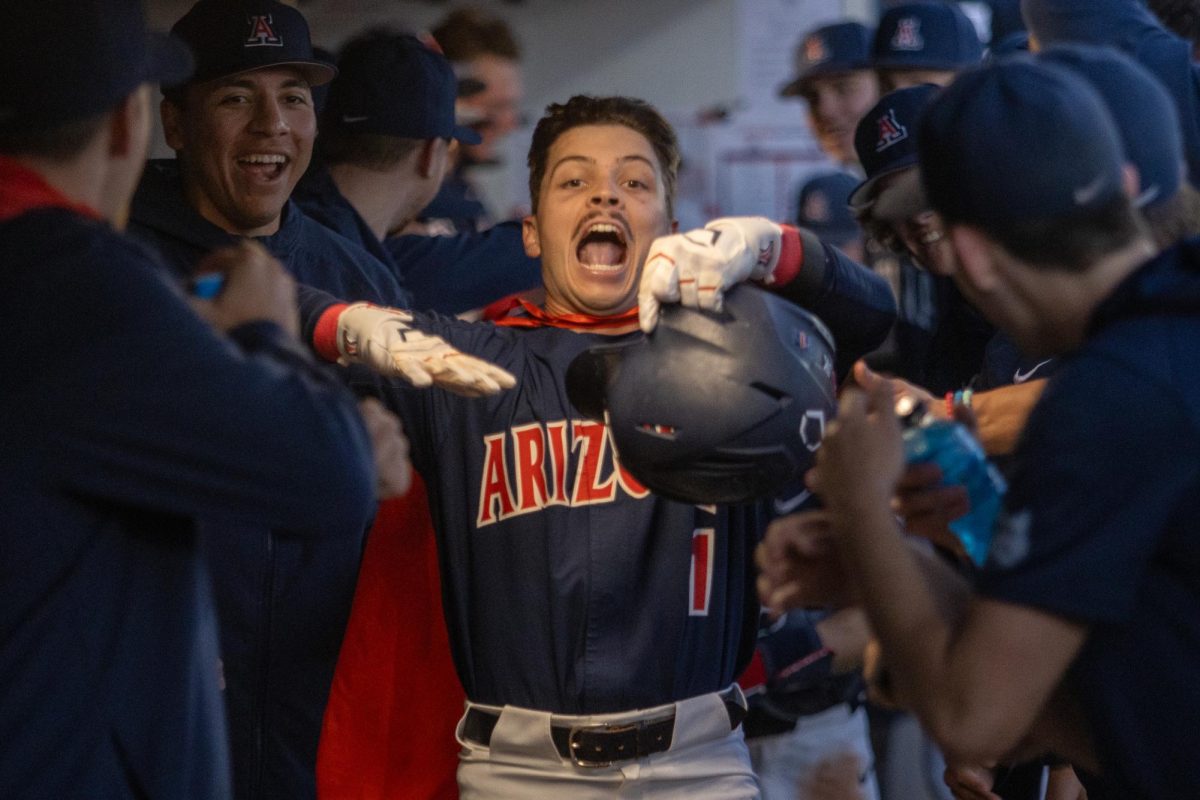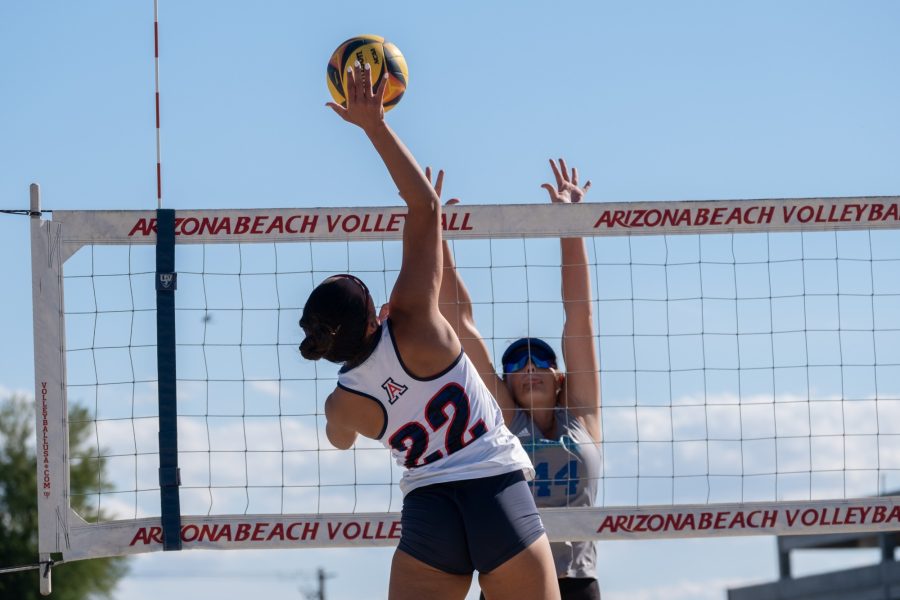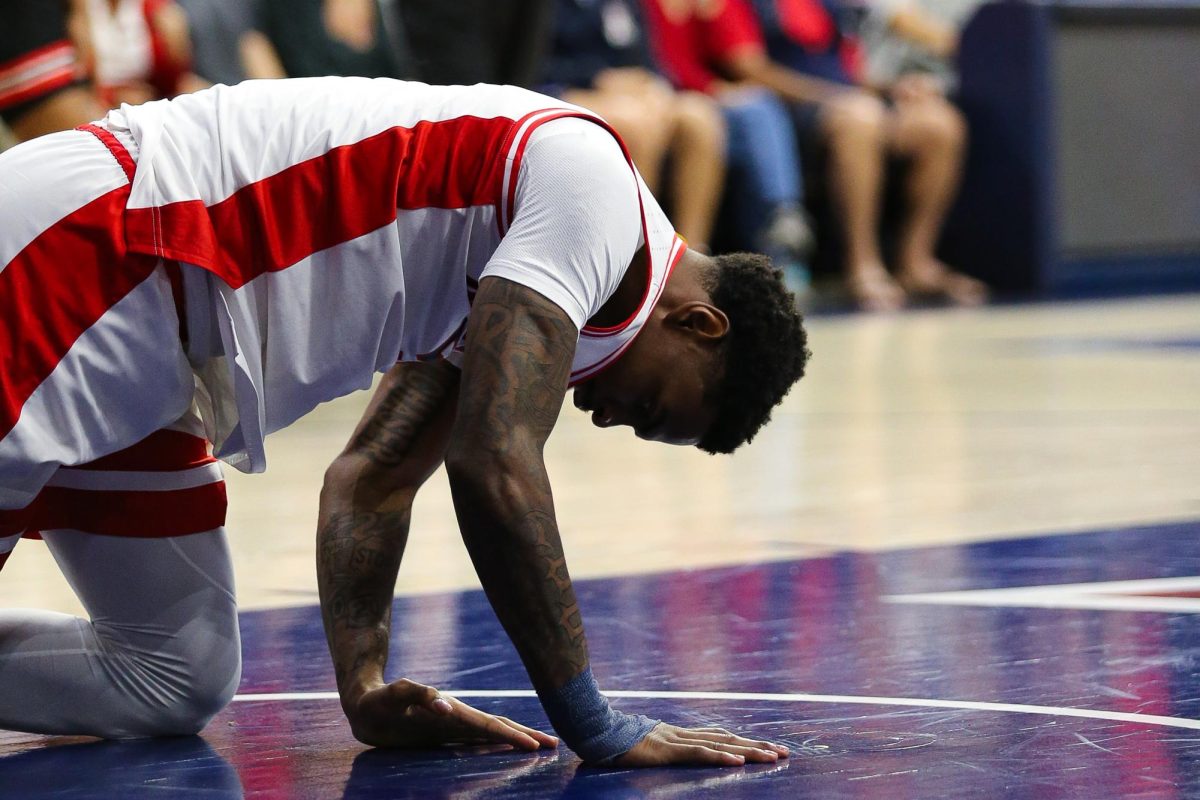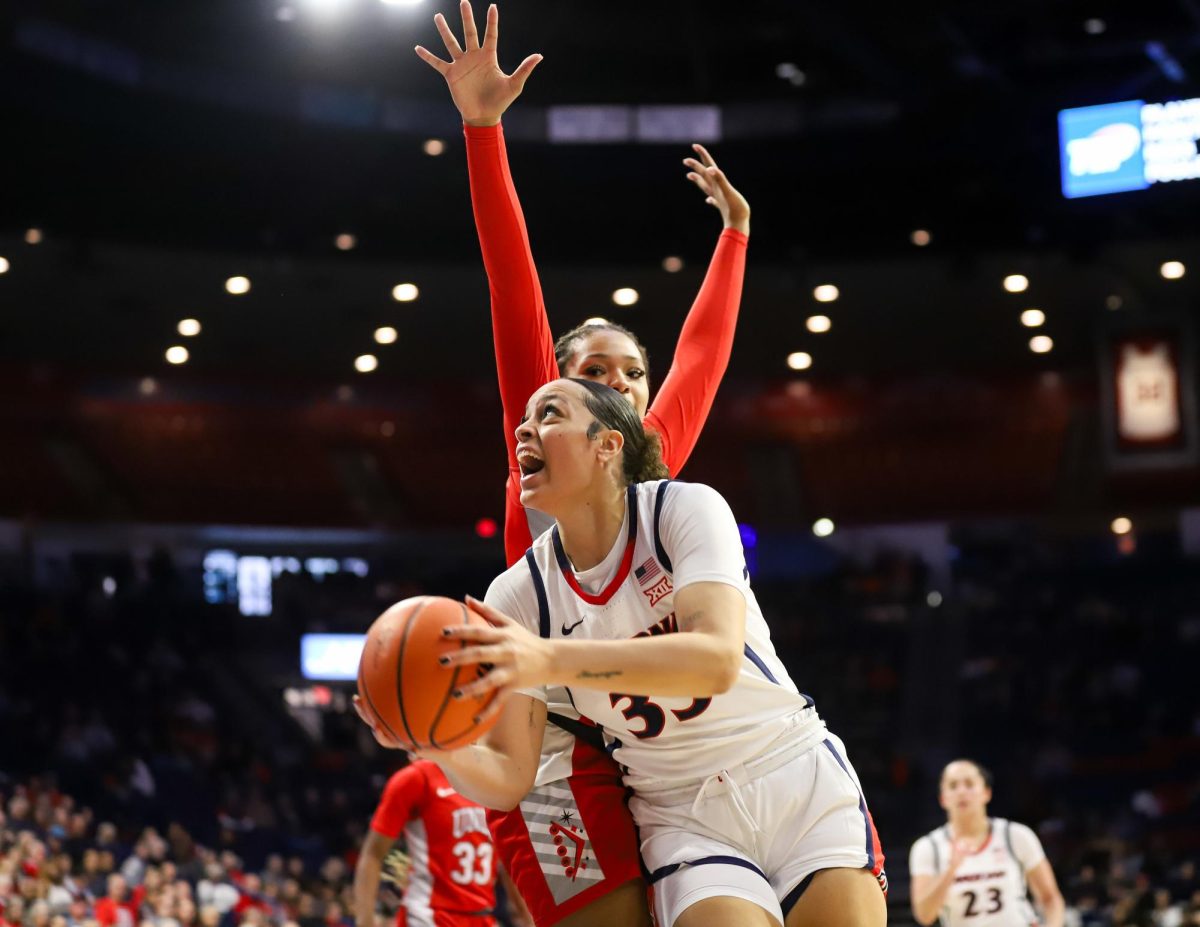One thing separates NFL return specialists Devin Hester and Josh Cribbs from the throng of other able and successful kick returners.
They both have the ability to take a stadium’s worth of people’s breath away with one cut and world-class speed. They may not score every play, but the threat of a long return keeps teams honest on the defensive end of special teams.
Arizona (3-2, 0-2 Pac-12) does not have a player of that sort on its roster, which has led to struggles in the return game.
“Everybody wants that guy that, when they catch the ball, the entire stands holds their breath because he might take it the distance,” head coach Rich Rodriguez said. “But we’re still looking for that guy.”
Arizona has fielded only 11 kickoffs in five games this season for a total of 175 yards, which is 11th in the conference and 113th in the nation. That’s two more returns than the Pac-12’s best return unit, USC, which has 65 more yards and a touchdown.
Due to the lack of a return game, the average starting point for the Wildcat offense is the 15-yard-line, 10 yards fewer than where the ball is placed on a touchback.
Despite poor field position, the offense has been able to hum along just fine, averaging 34.8 points per game.
“I don’t think it cripples the offense at all,” said Daniel Jenkins who leads the team with eight returns for 135 yards. “We have a strong, powerful offense and we can move the ball from anywhere on the field. It’s just about putting ourselves in a better position to do that.”
But the shoddy return game isn’t completely the fault of Arizona’s returners. In an effort to make the game safer, the NCAA moved the kickoff spot from the 30-yard line to the 35, which has resulted in more touchbacks.
“Obviously, it’s been a change, but we’re just trying to see what we can do,” offensive special teams coach Spencer Leftwich said.
“[The rule change] has affected it, because sometimes when you want to kick the ball out at different times in the game and different strategy, you try to pin them down. You try to get it in the end zone.”
Experience is hard to come by on returns, as kickoffs only happen after scores and at the beginning of every half.
“You only get six or seven reps at that, so you try to get everything right,” Leftwich said.
On offense and defense, the play is designed to go to a certain side of the field, and barring a blocking mishap, will stay on that side of the field. In the return game blockers set a wedge that the return men are supposed to find, and “it should just be hit the alley, make one cut if you have to, and go,” Leftwich said.
Arizona’s chances to jumpstart its return game won’t be plentiful this weekend against Stanford, a team that’s 19th in the country in kickoff return defense, giving up just 17.94 yards a return.
The Wildcats have been trying to get everything right, starting by switching out the return men. Sophomore running back Ka’Deem Carey was the team’s leading kick returner in 2011 and the starter this season, before being pulled in favor of backup running backs Kylan Butler and Jenkins.
“I’m still getting used to it,” Jenkins said. “It’s still something that I have to get comfortable with each game.”
Jenkins returned kicks in high school and even scored a few touchdowns on them. Despite Jenkins’ experience in the return game, he and Butler haven’t exactly mastered when to take the ball out of the end zone and which way to go.
“Sometimes, we’re not getting our hats fitted at the right spot,” Leftwich said. “Sometimes, we’re losing a block, and sometimes we’re making too many cuts too early. We can’t do anything if the ball is kicked in the end zone.”



